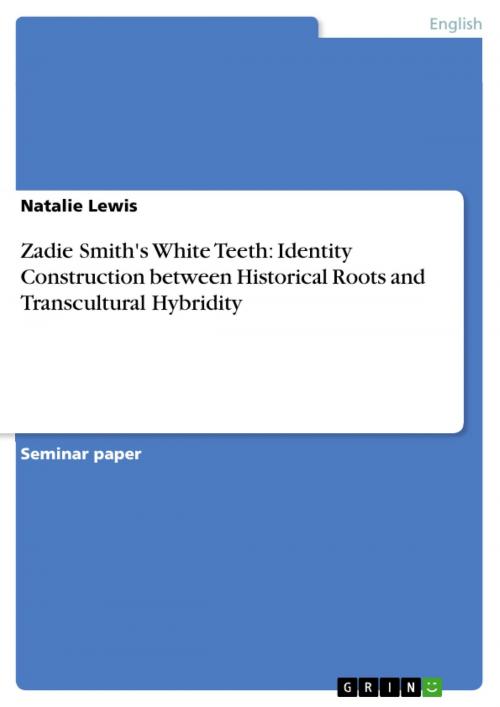Zadie Smith's White Teeth: Identity Construction between Historical Roots and Transcultural Hybridity
Fiction & Literature, Literary Theory & Criticism, British| Author: | Natalie Lewis | ISBN: | 9783638507554 |
| Publisher: | GRIN Publishing | Publication: | June 2, 2006 |
| Imprint: | GRIN Publishing | Language: | English |
| Author: | Natalie Lewis |
| ISBN: | 9783638507554 |
| Publisher: | GRIN Publishing |
| Publication: | June 2, 2006 |
| Imprint: | GRIN Publishing |
| Language: | English |
Seminar paper from the year 2004 in the subject English Language and Literature Studies - Literature, grade: 1,0, Free University of Berlin, course: Writing the City: Representations of London, 10 entries in the bibliography, language: English, abstract: In 1997, Zadie Smith, a young talented graduate from Cambridge, set out to write a novel about a simple white working-class Londoner who lives a good life throughout the 20th century by accident. Three years later, the author published her fictional debut,White Teeth, which gives its readers a panoramatic view of multicultural British society. The plot evolves around three families of different ethnic origins living in north-western London. In contrast to other initial works of contemporary Black British novelists, Zadie Smith's first novel is not the usual account of Black youth experience in Britain written from an autobiographical perspective. On more than 500 pages, the Anglo-Jamaican author explores a wide range of themes such as Second World War experiences, first-generation migrant life in the diaspora, recent British youth culture, intergenerational family conflicts, radical religious fanatism and biogenetical engineering. Despite its numerous discourses, diverse characters and multiple time-layers, all of the novel's addressed issues center around the problem of the individual person forming an authentic identity in a multicultural society and the establishment of a new national identity in postcolonial Britain. Zadie Smith explores the characters' identity conflicts before the background of their family history. However, while genetic inheritance, cultural origins and prehistory seem to play an important part in the individual's development, chance and personal choice are deceisive factors which have the potential to overrule any apparently predetermined life path. History and fate are constantly intermingled throughout the narrative, which is at the same time a migrant novel, bildungsroman and family saga.
Seminar paper from the year 2004 in the subject English Language and Literature Studies - Literature, grade: 1,0, Free University of Berlin, course: Writing the City: Representations of London, 10 entries in the bibliography, language: English, abstract: In 1997, Zadie Smith, a young talented graduate from Cambridge, set out to write a novel about a simple white working-class Londoner who lives a good life throughout the 20th century by accident. Three years later, the author published her fictional debut,White Teeth, which gives its readers a panoramatic view of multicultural British society. The plot evolves around three families of different ethnic origins living in north-western London. In contrast to other initial works of contemporary Black British novelists, Zadie Smith's first novel is not the usual account of Black youth experience in Britain written from an autobiographical perspective. On more than 500 pages, the Anglo-Jamaican author explores a wide range of themes such as Second World War experiences, first-generation migrant life in the diaspora, recent British youth culture, intergenerational family conflicts, radical religious fanatism and biogenetical engineering. Despite its numerous discourses, diverse characters and multiple time-layers, all of the novel's addressed issues center around the problem of the individual person forming an authentic identity in a multicultural society and the establishment of a new national identity in postcolonial Britain. Zadie Smith explores the characters' identity conflicts before the background of their family history. However, while genetic inheritance, cultural origins and prehistory seem to play an important part in the individual's development, chance and personal choice are deceisive factors which have the potential to overrule any apparently predetermined life path. History and fate are constantly intermingled throughout the narrative, which is at the same time a migrant novel, bildungsroman and family saga.















